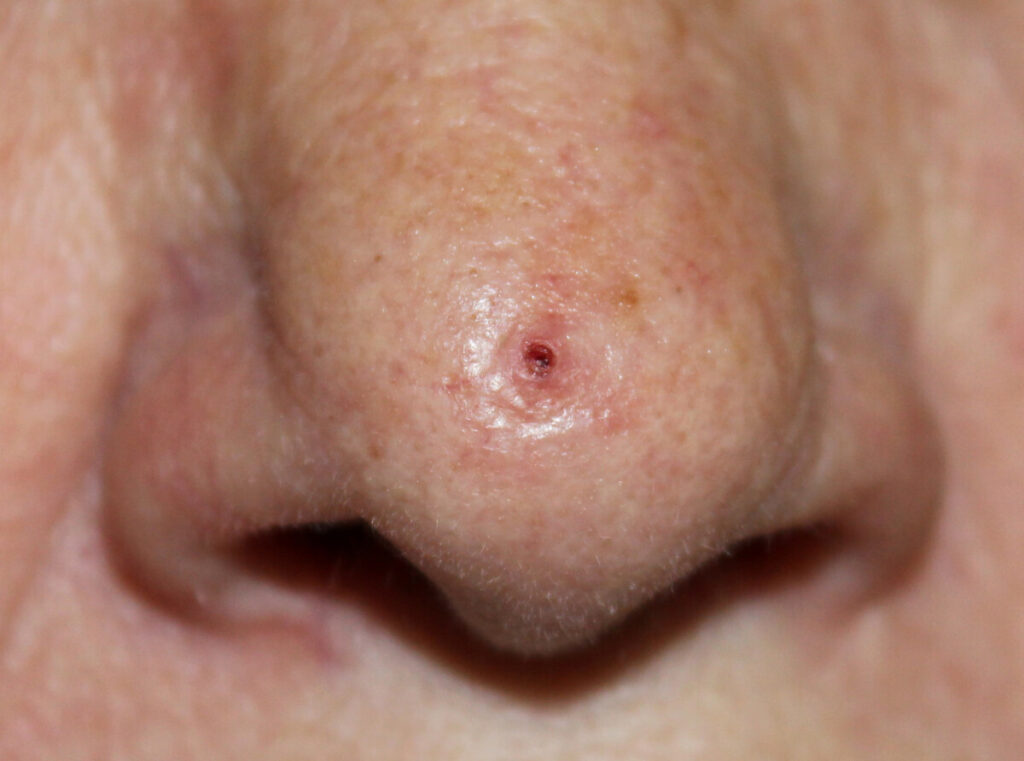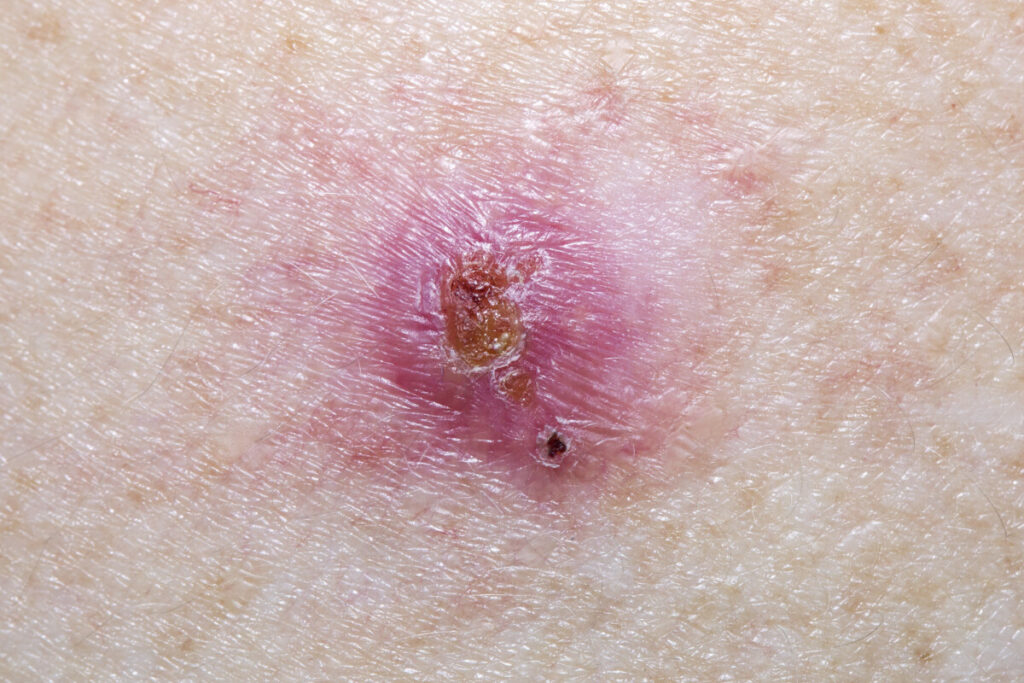
What Does Basal Cell Carcinoma Look Like?
Most basal cell carcinomas (BCCs) appear on the skin in places exposed to ultraviolet (UV) radiation. BCCs have some typical characteristics, but appearance varies widely, and a medical professional should assess any suspicious skin growths or abnormalities.
Many BCCs are small, elevated bumps or skin sores, red, pink, or pearly white in color. Some may crust, itch, or bleed and are often mistaken for “pimples” that have been present for several weeks and aren’t healing.
BCCs may appear as:
· An open sore that bleeds, oozes, or crusts and remains open for several weeks
· A red, raised patch or irritated area that may crust or itch but generally doesn’t hurt
· A shiny pink, red, pearly white, or translucent bump
· A pink growth with a raised border and crusted central indentation.
· A scar-like, white, yellow, or waxy area, often with a poorly defined edge
· A darker-colored (pigmented), pearly, translucent skin growth (more common in skin of color than in light skin)
· An ulcerated lesion, which means a portion of the skin that covers the growth is not healing
These images reflect the variation in the appearance of BCC. Images are meant to help you recognize areas on your skin that warrant consultation with a medical professional. This image bank is not exhaustive, and your healthcare provider can help determine whether the area of suspicion requires further management.

Ulcerated basal cell carcinoma on the nose of an elderly woman

Basal cell carcinoma on the skin of the face

Basal Cell Carcinoma
